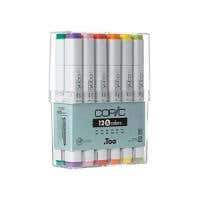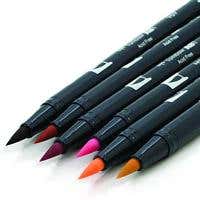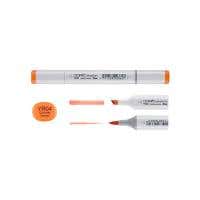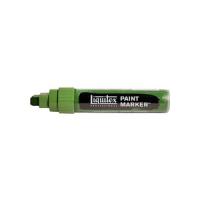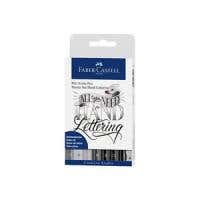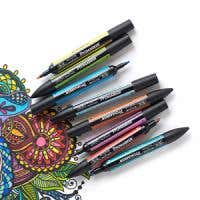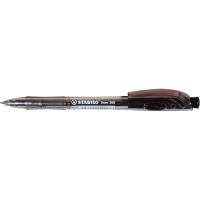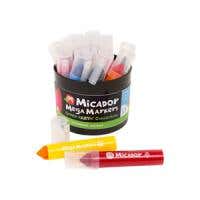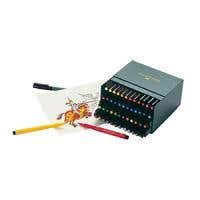Pens & Markers
The right drawing tools can take your art to the next level. Whether you're sketching, inking, illustrating or designing, using high-quality pens and markers ensures crisp lines, smooth shading and professional-quality results.
But with so many options available, how do you know which ones to choose? Should you go for alcohol-based markers or water-based ones? Are fineliners better than brush pens for inking? This guide will break down the different types of drawing pens and markers, their applications and how to pick the best ones for your art.
Types of Drawing Pens
From technical precision to expressive strokes, drawing pens come in various styles. Let’s explore the best options for different artistic needs.
Fineliners and Technical Pens
If you need sharp, precise lines, fineliners and technical pens are a must. These pens offer consistent ink flow, making them perfect for:
- Illustrations & comics: Used for inking outlines and intricate details.
- Architectural & technical drawings: Essential for blueprints and schematics.
- Cross-hatching & stippling: Allows controlled, detailed shading techniques.
For crisp lines, the STAEDTLER Triplus Fineliner Set is a favourite among architects and illustrators, offering smooth, fine-tip precision. Sakura Pigma Intermediate Manga Set is ideal for comic book artists, thanks to its archival-quality ink that won’t smudge or fade.
If you need ultra-fine control, consider the Faber-Castell Pitt Artist Pen Set with Indian ink, which is perfect for precise line work in technical drawings or stippling techniques.
Brush Pens and Calligraphy Pens
For expressive strokes and dynamic lines, brush pens and calligraphy pens offer fluid ink flow and beautiful line variation. These are perfect for:
- Hand lettering & calligraphy: Flexible tips create elegant thick-and-thin strokes.
- Manga & character art: Adds movement and depth to illustrations.
- Ink washes & shading: Some brush pens have water-soluble ink for soft, blended effects.
For a dual-purpose pen, the Tombow Dual Brush Pen Set provides a fine tip for details and a brush tip for expressive strokes. If you're into calligraphy or modern lettering, Faber-Castell Pitt Artist Brush Pens deliver rich, pigmented ink that glides smoothly across the page.
Looking for something more traditional? The Manuscript Leonardt Dip Nib Student Artist Set lets you experiment with classic calligraphy techniques, giving your lettering a handcrafted feel.
Types of Drawing Markers
Markers are perfect for bold colour, smooth shading and seamless blending. The right choice depends on whether you need alcohol-based markers for professional-quality gradients or water-based markers for streak-free application.
Alcohol vs. Water-Based Markers
Both alcohol-based and water-based markers have their advantages. Understanding the differences will help you determine which is best for your needs.
- Alcohol-based markers
- Blend seamlessly for gradients and shading
- Work well on various surfaces like plastic, wood and acetate
- Dry quickly and are permanent
- Ideal for fashion design, product rendering and illustration
- Water-based markers
- Non-toxic and odour-free, making them beginner-friendly
- It can be layered for watercolour-like effects
- Do not bleed through most sketchbooks or journals
- Perfect for hand lettering and mixed media art
For professional-quality blending, Copic Ciao Marker Assorted Colour Sets are a must-have for illustrators and graphic designers, offering rich, alcohol-based ink and seamless layering. If you prefer water-based markers, Posca Marker Sets provide vibrant, opaque colours that work on paper, wood, glass and fabric.
Best Markers for Illustration and Design
Professional artists and designers rely on high-quality markers for vibrant colours, smooth application and excellent blending. Some key factors to consider include:
- Tip versatility: Dual-tip markers offer fine details and broad strokes.
- Blendability: Alcohol-based markers allow for seamless colour transitions, while water-based markers provide soft layering effects.
- Colour selection: A wide variety of shades helps with detailed shading, highlights and gradients.
For bold, high-opacity applications, the Liquitex Acrylic Paint Marker Gift Set is perfect for mixed media and large-scale illustrations. If you're after watercolour-like blending, the Faber-Castell Goldfaber Aqua Dual Marker Wallet is ideal for layered washes and delicate gradients.
Looking for metallic effects? STAEDTLER Metallic Brush Markers add a shimmering finish to lettering and illustrations, making them great for decorative artwork and highlights.
Let’s Get Drawing!
The best drawing pens and markers are the ones that feel comfortable and natural in your hand. Whether you’re a precision-loving fineliner artist, an expressive brush pen user or a colour-focused illustrator, having the right tools makes all the difference.
So go ahead—experiment, explore and create. With the right pens and markers, your ideas can come to life in ways you never imagined.
Find the best drawing pens and markers for your next project—shop now at Eckersley’s!
We accept

